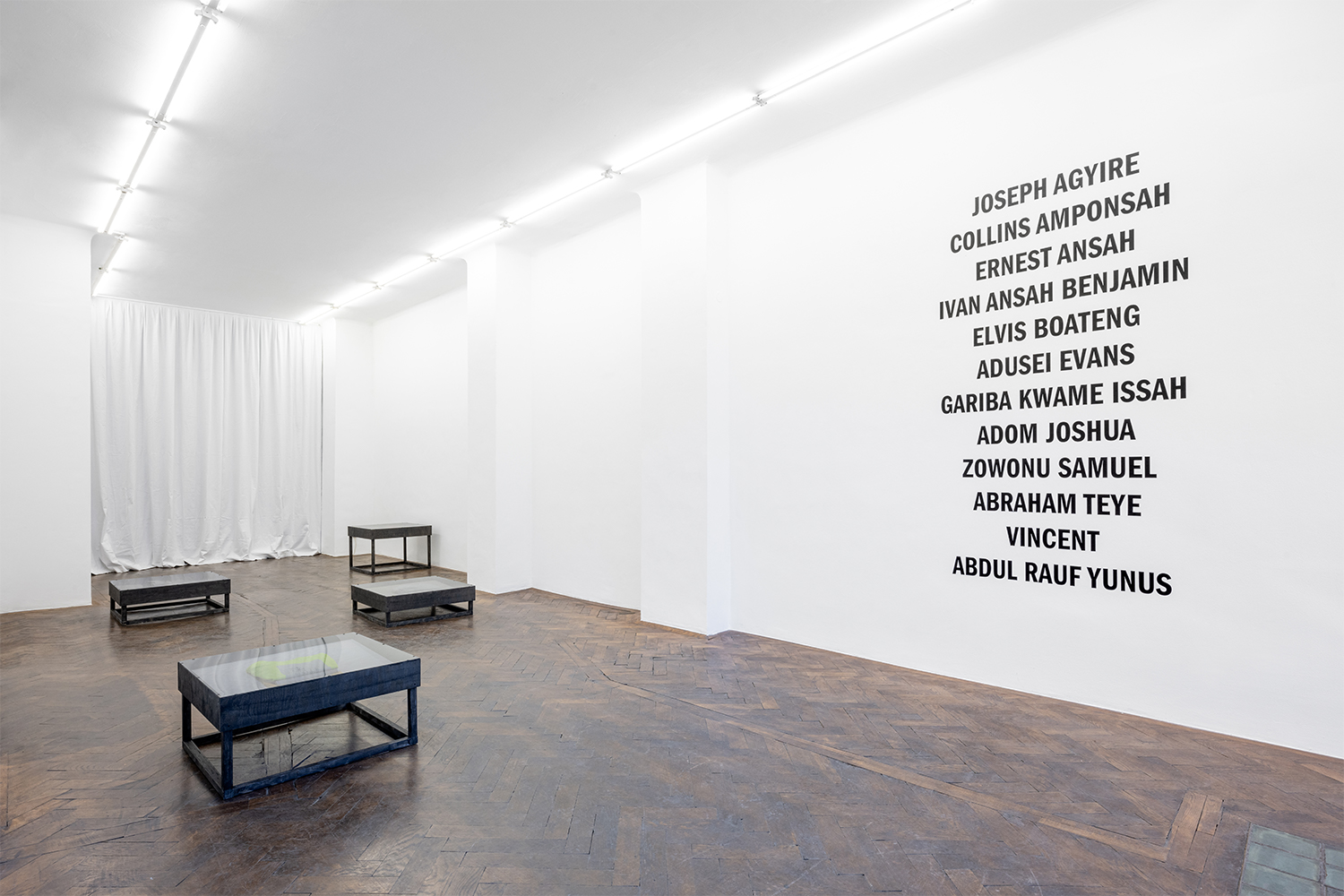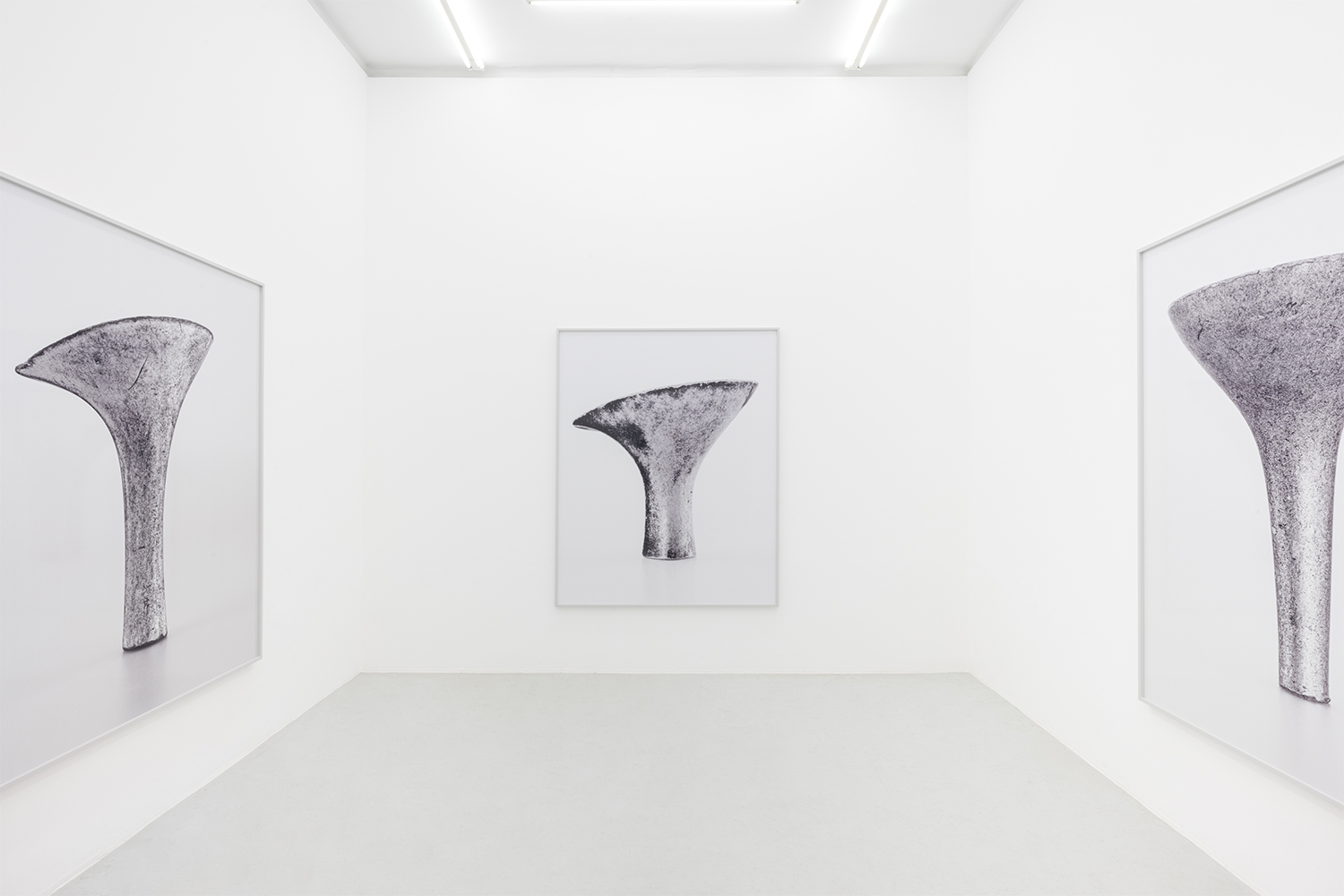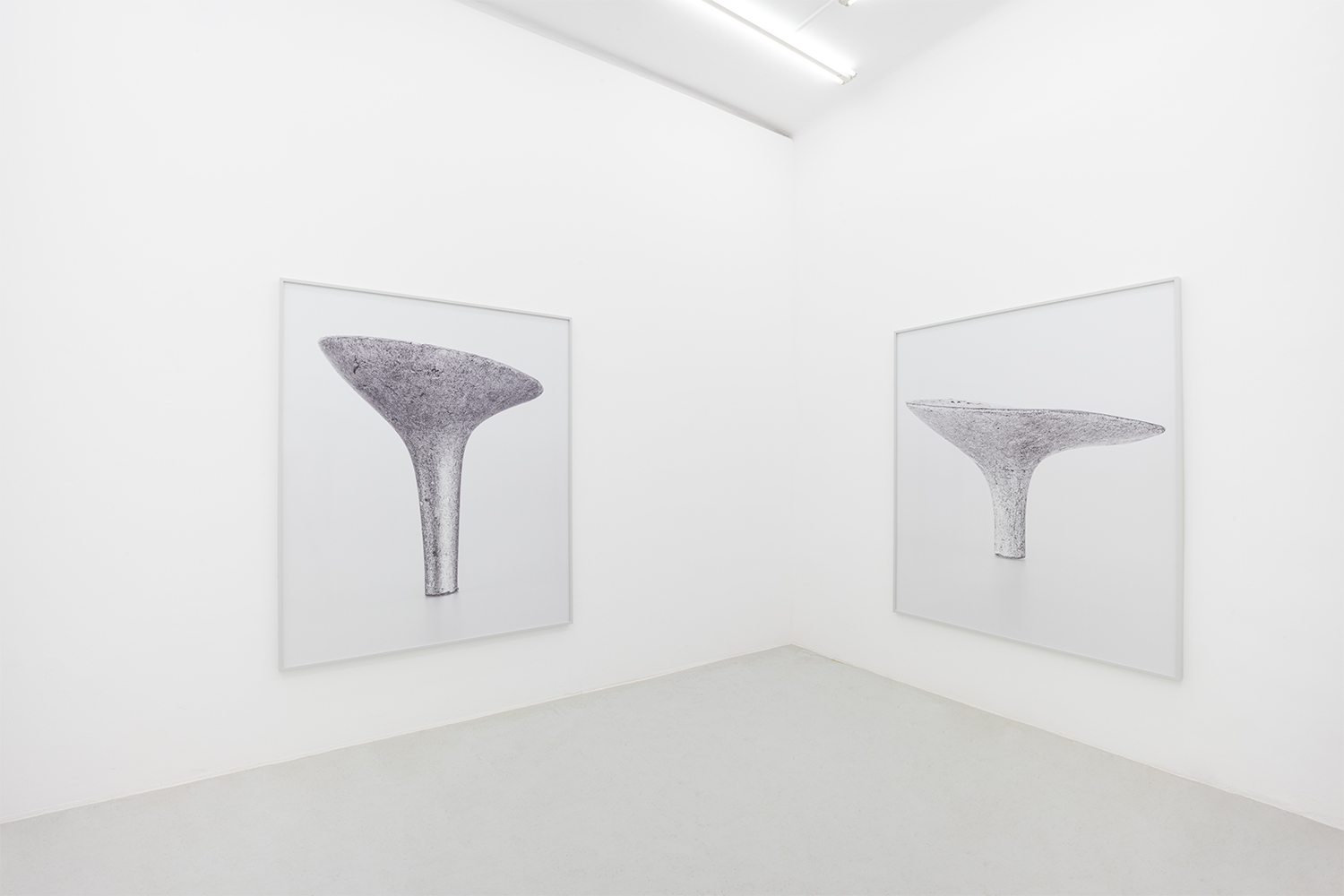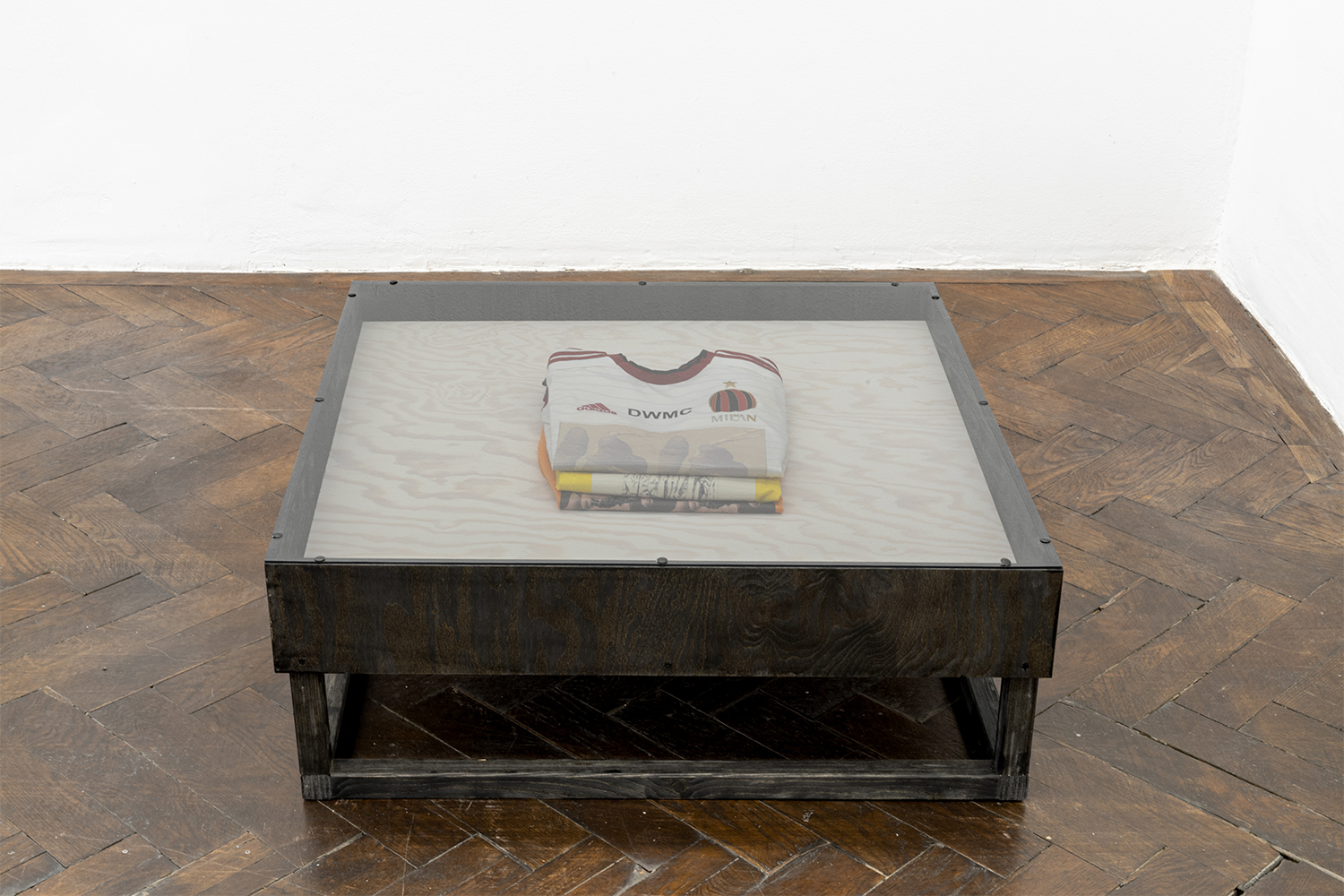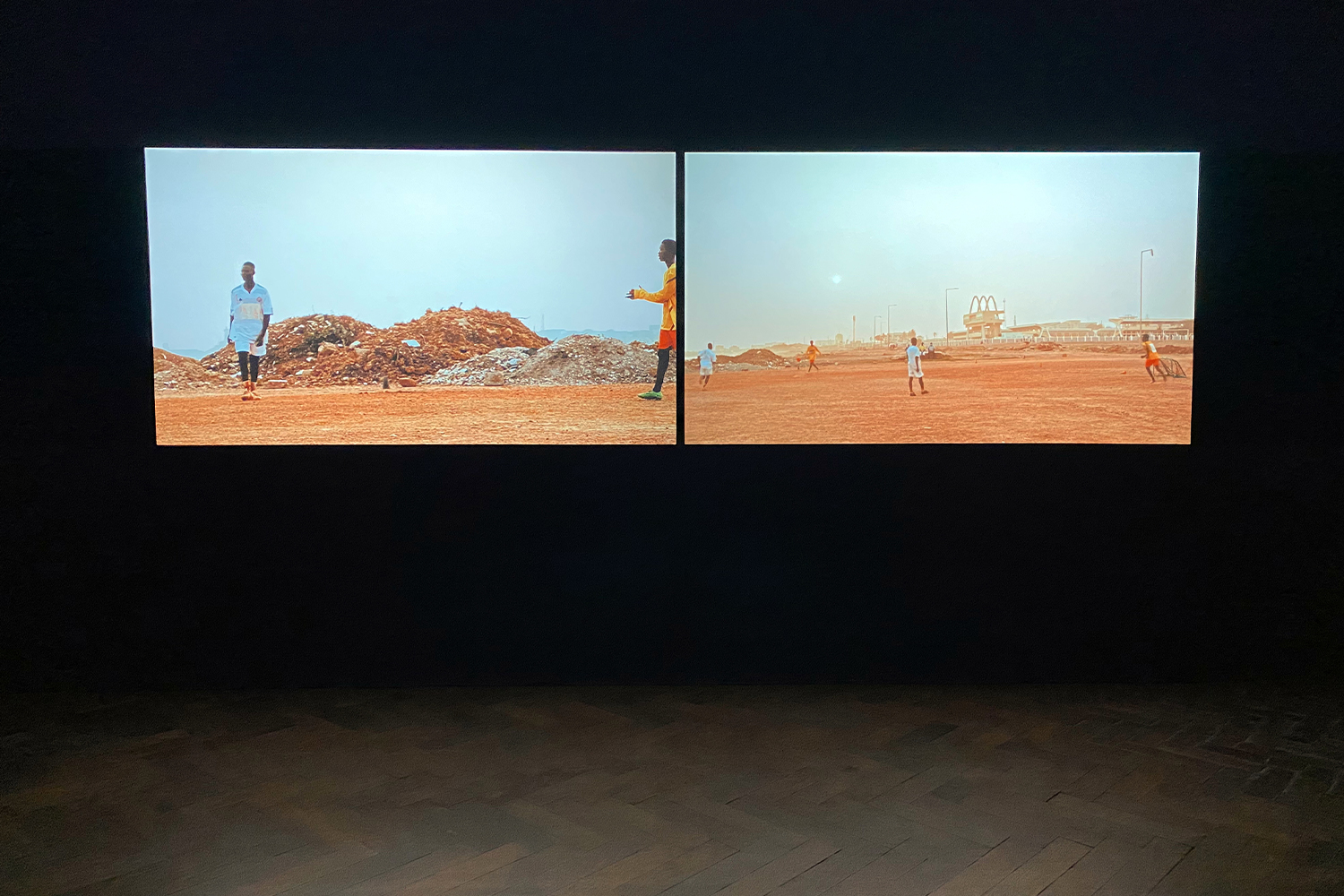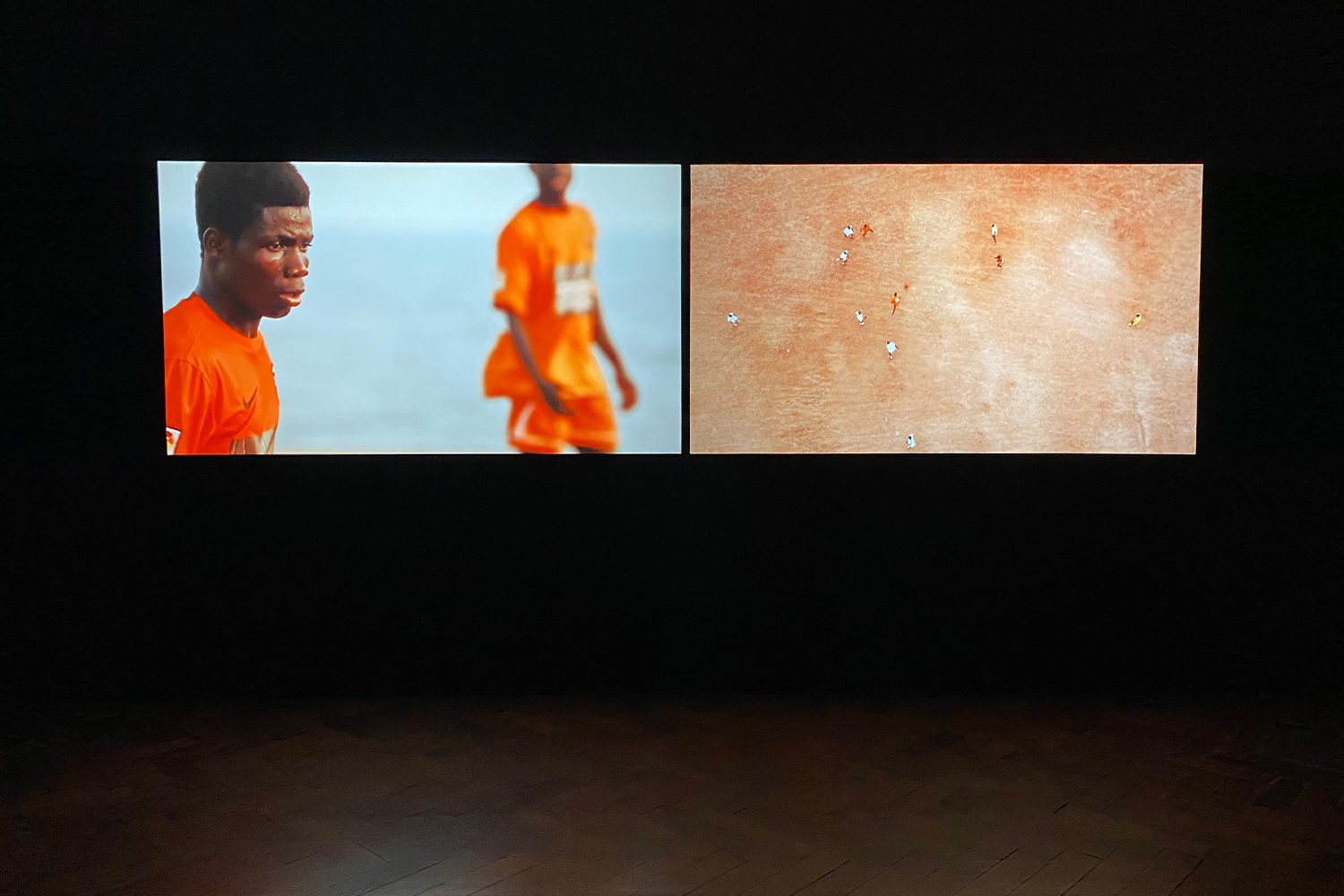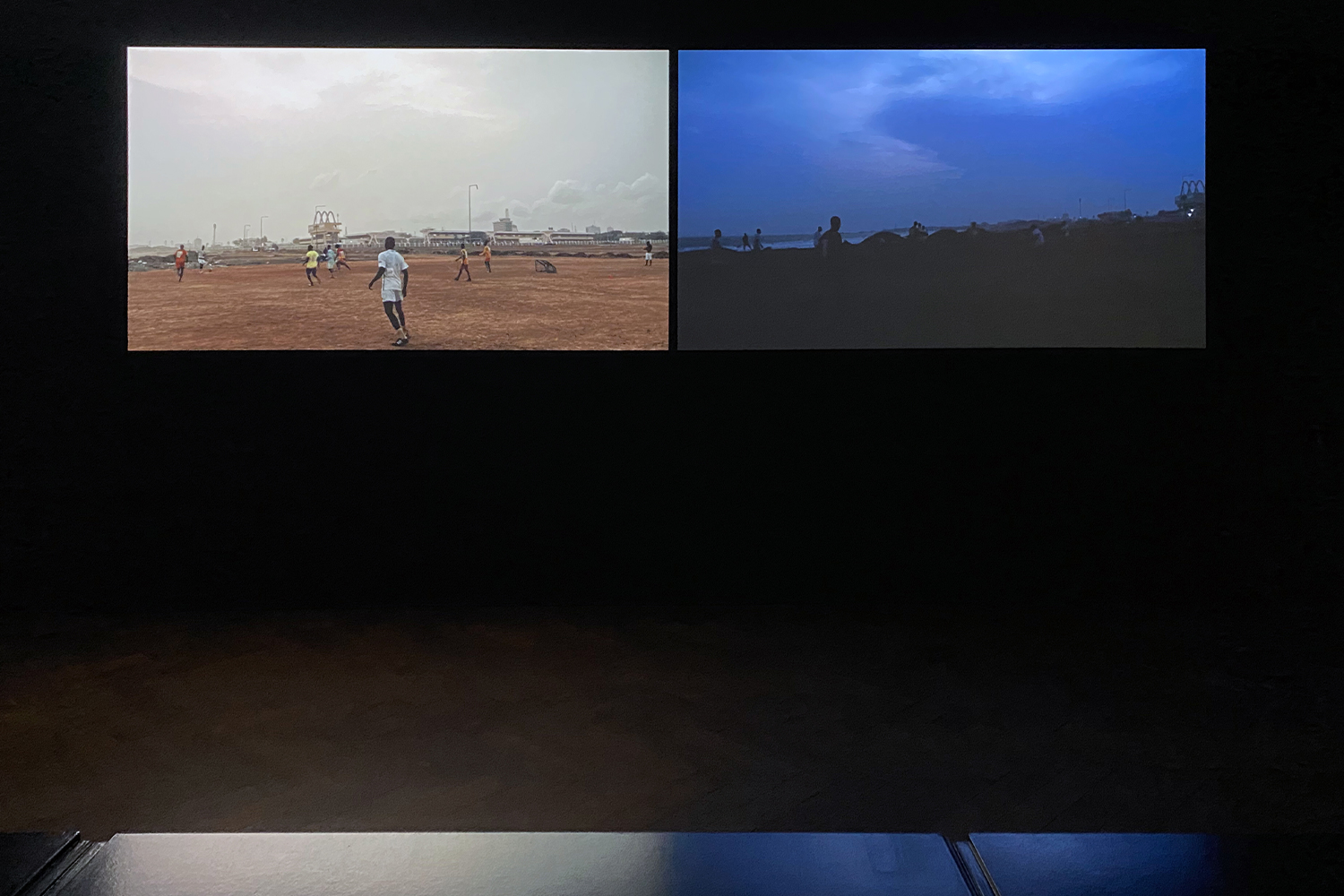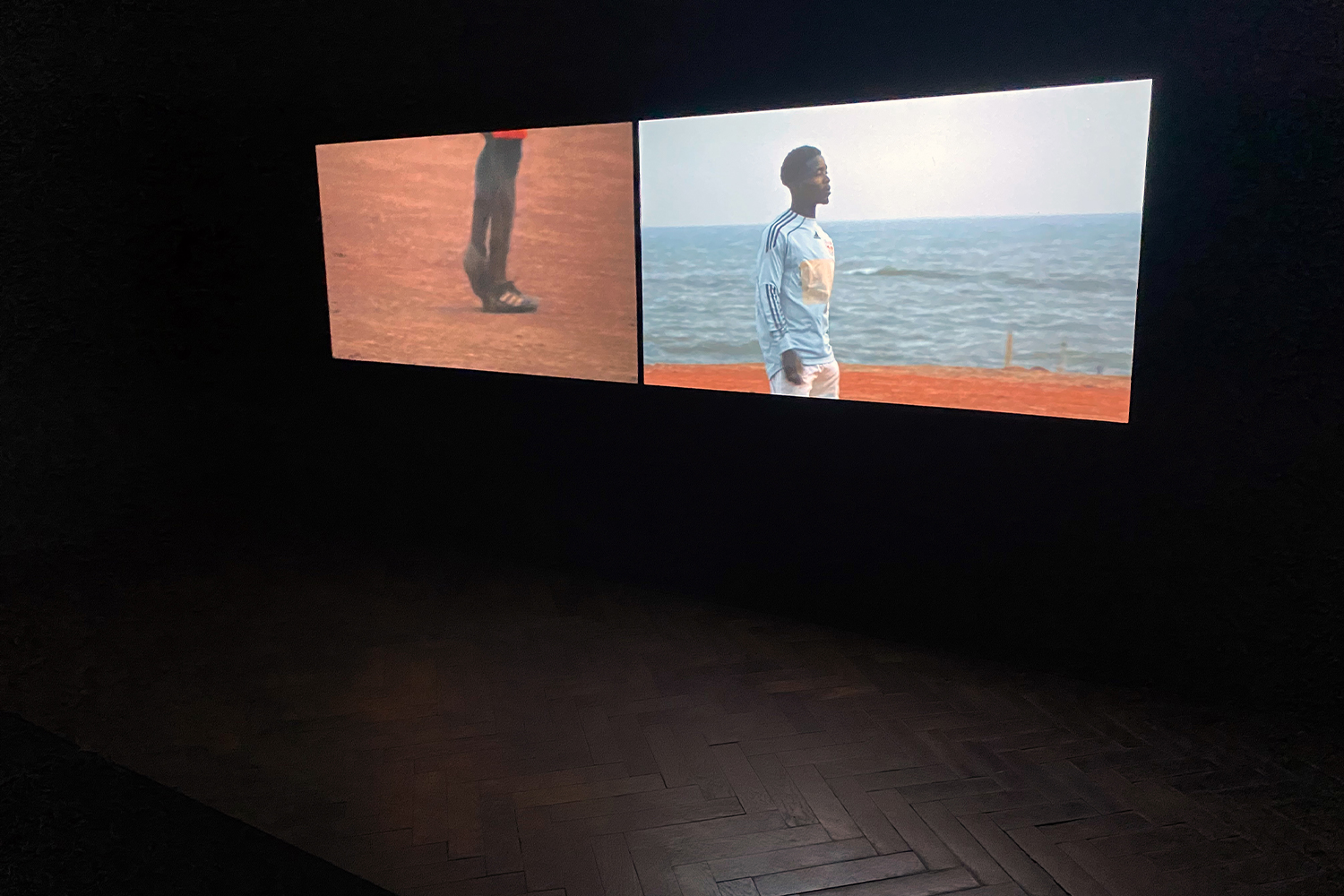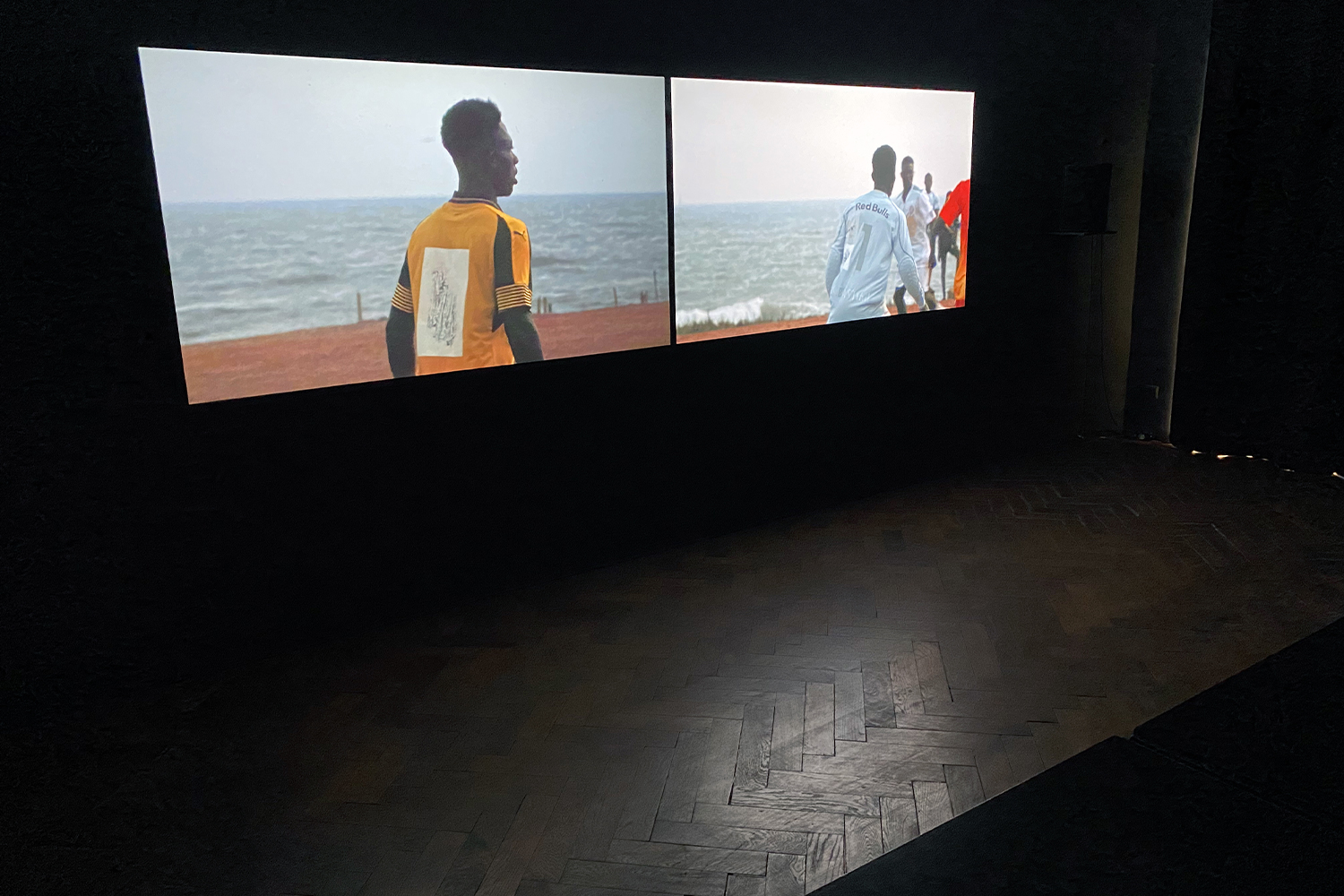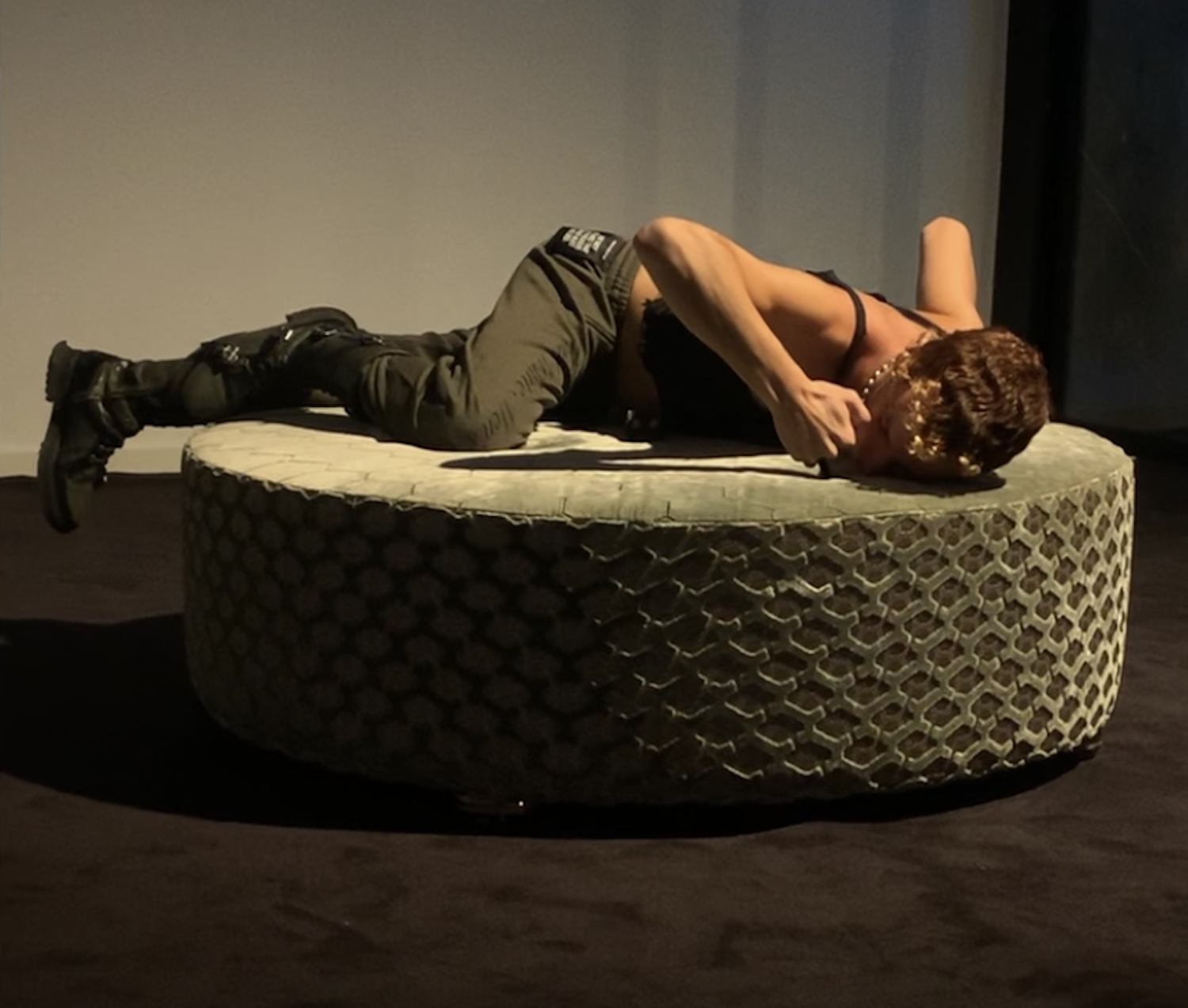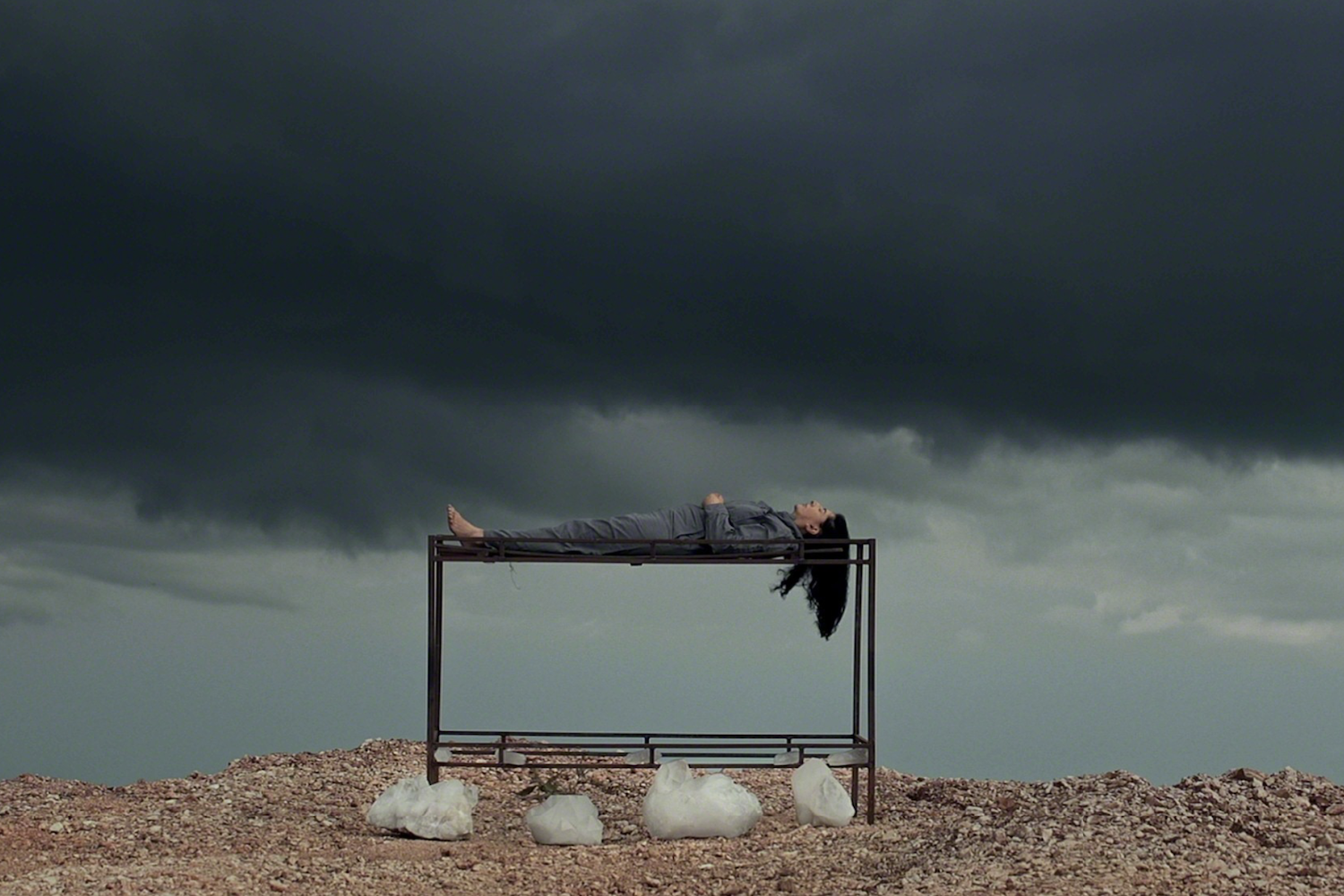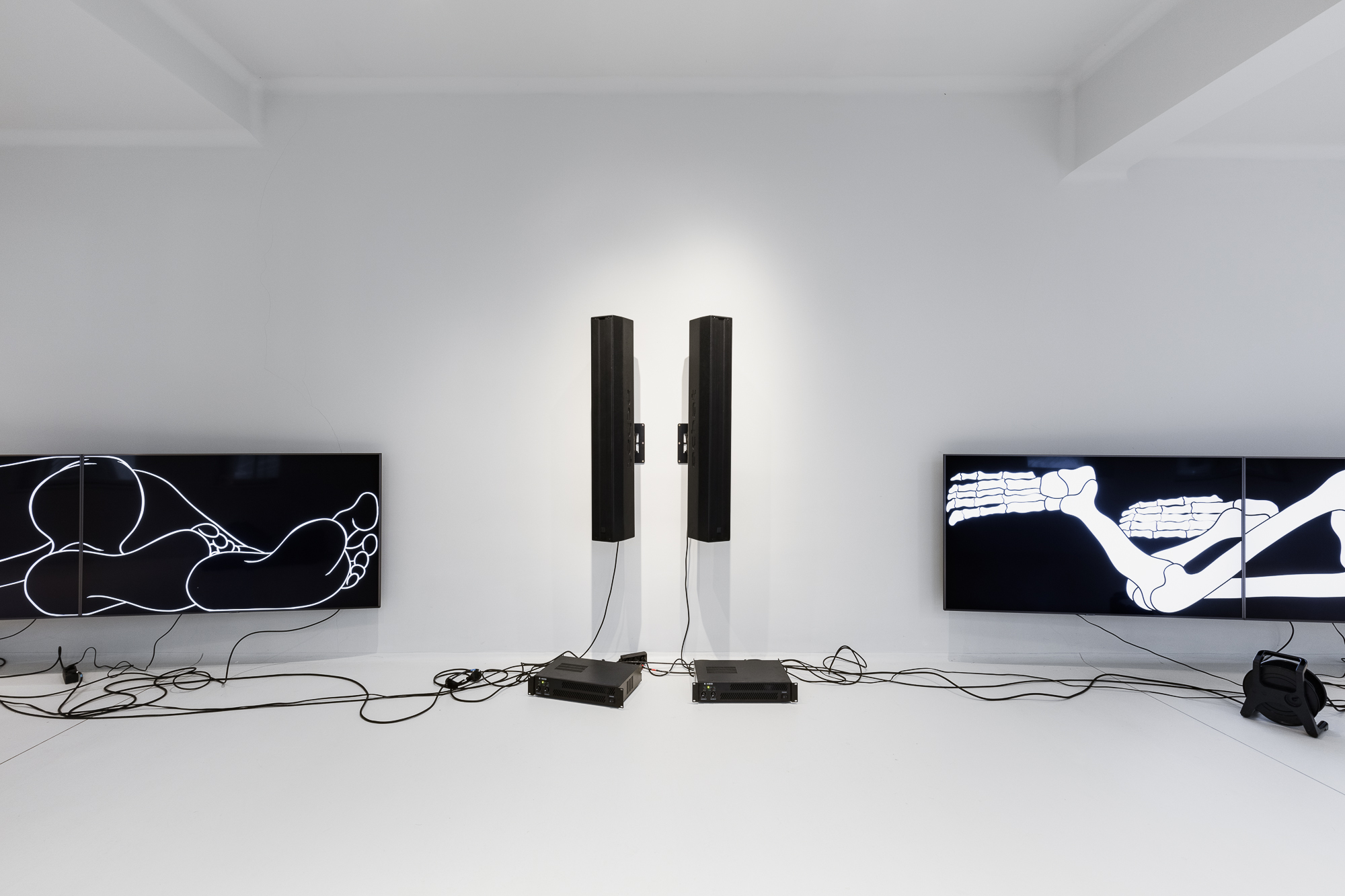“RECREATION” is Jojo Gronostay’s first solo exhibition at Galerie Hubert Winter. Jojo Gronostay is a German artist with Ghanaian roots. He studied at the Academy of Fine Arts in Vienna and at the École des Beaux-Arts in Paris. The eponymous two-channel video installation (RE-) CREATION (2021) is at the core of his exhibition. The film was shot on the coast of Accra, Ghana’s capital, where Jojo Gronostay initiated a soccer game.
The film begins with images shot during twilight, whether dusk or dawn cannot be determined, the sound of the sea can be heard and constantly superimposes the noises of the game. Only atmospheric ambient music—com- posed by Sofie Fatouretchi—drown the ocean sounds. The choreography of the soccer game unfolds in this visu- ally and acoustically hazy atmosphere. The images of the two channels approach a synchronous image composi- tion, depict the event from different perspectives, but also divert again. Close-ups bring the players to the fore, portray them and you can see that the players’ jerseys are manipulated. The football shirts of European clubs, which also shape the urban image in everyday life, were printed by Jojo Gronostay via his label DWMC, spon- sors partially overprinted and thus appropriated.
The loose temporality of the images makes it possible to superimpose different temporalities on the field: the memory of a colonized past and the cesura with it, the fallow land of the present and the future of a capitalized metropolis. With a calm, sensitive eye, Jojo Gronostay captures a precarious look at a (playing) field on which different discourses are condensing: the representation of blackness, the white gaze on Africa, colonial structures that still prevail and the hegemonic, economic relations between Europe and Africa, which (in this case) are maintained by financially oriented, professionalized football.
A large concrete arch architecture can be seen again and again in the background of the film. It is the Independence Arch, which was built in 1957 commemorating Ghana’s independence. Brutalist architecture from the 1960s marks the architectural break with the colonized past as well as the local tradition in many West African countries. Jojo Gronostay takes up the sculptural quality of these brutalist buildings in his photographic works from the series Brutalism (2021). He stages broken heels that he has bought in Accra at the Kantamanto Mar- ket—one of the largest hubs for second-hand clothing from Asia, Europe, North America and Australia—in the studio. By enlarging them to human life-size, the objects are alienated to such an extent that sculptural and archi- tectural aspects come to the fore and evoke reminiscences of the brutalist architecture mentioned above.
Jojo Gronostay’s conceptual practice deals with questions of identity and representation, platforms, recycling and the in-between. His work explores the political and economic structures between Europe and Africa and with platforms such as the DWMC label – Dead White Men’s Clothes, he also created a structure for himself to inter- vene in these cycles. Thereby examining concepts such as economy or value as well as the exchange of people and goods between the two continents.

